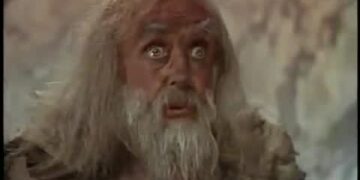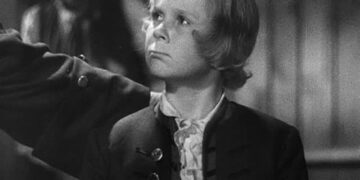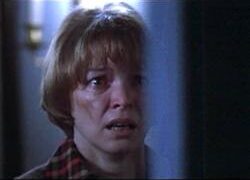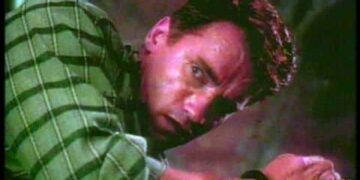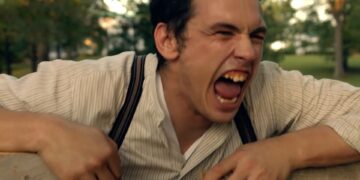La Belle Bíªte, or The Beautiful Beast, is a 1959 novel by Canadian author Marie Claire Blais. The book tells the story of a dysfunctional family, exploring themes of power, beauty, and cruelty.
In 2006, the novel was adapted into a film by director Karim Hussain, bringing the story to life on the big screen. This article aims to provide a comprehensive exploration of La Belle Bíªte, delving into the book summary, movie insights, and the intriguing worlds of Marie Claire Blais and Karim Hussain.
Marie Claire Blais: A brief biography and overview of works
Marie Claire Blais was born in Quebec, Canada, in 1939. She began her literary career at a young age, publishing her first novel, La Belle Bíªte, at just 20 years old.
Over the years, Blais has written more than 20 novels, along with plays, poetry, and essays. Her works often touch on themes of social injustice, human suffering, and the search for beauty in a cruel world.
Some of her most notable works include Une saison dans la vie d’Emmanuel (A Season in the Life of Emmanuel), which won the prestigious Prix Médicis in 1966, and the Soifs series (These Festive Nights), a cycle of novels exploring the lives of a diverse group of characters.
Blais has received numerous awards and honors for her contributions to literature, including the Governor General’s Award for Fiction and the Prix Athanase-David.
Book summary of La Belle Bíªte
La Belle Bíªte tells the story of a dysfunctional family living in rural Quebec. The novel centers on three siblings: Isabelle-Marie, Patrice, and Louise. Isabelle-Marie, the eldest, is a shy, introverted girl who is constantly overshadowed by her beautiful younger sister, Louise. Patrice, the youngest, is a sickly boy who struggles with his health and is often the victim of bullying.
Throughout the novel, the siblings vie for the love and attention of their mother, Léopoldine, who is both cruel and manipulative.
Léopoldine favors Louise for her beauty, while disregarding and even abusing Isabelle-Marie and Patrice. The story follows the siblings as they navigate the complexities of their family dynamics, with tragic and unsettling consequences.
The captivating world of La Belle Bíªte: Characters and setting
The world of La Belle Bíªte is rich and complex, with strong character development and a vivid sense of place.
The novel takes place in rural Quebec, with the family living on a farm that becomes a character in its own right. The setting is essential to the story, providing a backdrop for the characters’ struggles and emphasizing the isolation and harshness of their lives.
The characters in La Belle Bíªte are deeply flawed, yet compelling. Isabelle-Marie, with her quiet strength and determination, serves as a foil to her beautiful yet cruel sister, Louise. Patrice, the sickly and vulnerable youngest sibling, is a character that elicits both sympathy and frustration.
Léopoldine, the manipulative and abusive mother, adds a layer of darkness to the story, highlighting the destructive power of beauty and cruelty.
La Belle Bíªte on the big screen: Movie summary and insights
In 2006, director Karim Hussain adapted La Belle Bíªte into a feature film, bringing the story to life with powerful visuals and performances.
The film stars Carole Laure as Léopoldine, Marc-André Grondin as Patrice, Caroline Dhavernas as Isabelle-Marie, and David La Haye as Louise.
The movie stays true to the novel’s dark and unsettling themes, exploring the complexities of family relationships, the power of beauty, and the consequences of cruelty.
The film’s visual style enhances the story, with striking cinematography and a moody color palette. The performances are equally powerful, with the actors bringing depth and nuance to their roles.
Exploring the film locations of La Belle Bíªte
The film adaptation of La Belle Bíªte was shot on location in rural Quebec, capturing the novel’s atmospheric setting and adding a sense of realism to the story.
The farm where the family lives was filmed in the picturesque town of Saint-í‰lie-de-Caxton, known for its beautiful landscapes and historic architecture.
Other locations used in the film include the city of Trois-Rivií¨res, with its charming streets and historic buildings, and the scenic Mauricie region, known for its lush forests and rolling hills. The authentic locations help to transport the viewer into the world of La Belle Bíªte, enhancing the film’s impact.
The sounds of La Belle Bíªte: David Kristian’s soundtrack
The soundtrack for La Belle Bíªte, composed by David Kristian, plays a crucial role in setting the tone for the film. Kristian’s haunting, atmospheric score perfectly complements the dark themes of the story and the moody visuals.
The music adds depth to the film, underscoring the emotions and tension that run throughout the story.
David Kristian is a Canadian composer and sound designer known for his work in film, television, and video games. His other notable scores include the films Subconscious Cruelty and Malefic, as well as the video game Tom Clancy’s Splinter Cell: Chaos Theory.
Parent guide: What to expect from the book and movie
Both the book and movie versions of La Belle Bíªte contain mature themes and content that may not be suitable for younger audiences. The story explores dark and often disturbing subject matter, including abuse, manipulation, and cruelty.
While the novel does not contain explicit descriptions of violence or sexuality, the film adaptation does include some scenes that may be unsettling or inappropriate for younger viewers.
Parents should be aware of these themes and use their discretion when deciding if La Belle Bíªte is appropriate for their children. The story can serve as a starting point for discussions about family dynamics, the power of beauty, and the consequences of cruelty.
Unraveling the ending: Explaining the conclusion of La Belle Bíªte
The conclusion of La Belle Bíªte is intentionally ambiguous, leaving readers and viewers to draw their own interpretations of the characters’ fates.
Throughout the story, the siblings’ relationships become increasingly toxic, culminating in a shocking and tragic climax. The ending leaves the reader questioning the nature of beauty, power, and cruelty, and serves as a stark reminder of the destructiveness of these forces.
Memorable quotes from La Belle Bíªte
La Belle Bíªte is a thought-provoking and powerful novel, filled with memorable quotes that capture the essence of the story and its themes. Some standout quotes include:
- “Beauty is a power that can destroy everything around it.”
- “The most beautiful things have the cruelest hearts.”
- “In a world full of monsters, who is truly the beast?”
These quotes highlight the key themes of La Belle Bíªte, emphasizing the power of beauty and the destructive nature of cruelty.
A closer look at the characters: Who’s who in La Belle Bíªte
The characters in La Belle Bíªte are complex and multifaceted, each contributing to the story in their own way. Here’s a brief overview of the main characters:
- Isabelle-Marie: The eldest sibling, a quiet and introverted girl who is overshadowed by her beautiful sister, Louise.
- Louise: The beautiful and cruel younger sister, favored by her mother and often at odds with Isabelle-Marie.
- Patrice: The sickly and vulnerable youngest sibling, who struggles with his health and is often bullied.
- Léopoldine: The manipulative and abusive mother, who favors Louise for her beauty and disregards her other children.
Bringing La Belle Bíªte to life: Tips for cosplay and dressing like the characters
For fans of La Belle Bíªte, dressing like the characters can be a fun and creative way to express their love for the story. Here are some tips for creating costumes inspired by the characters:
- Isabelle-Marie: Opt for simple, modest clothing in muted colors, and accessories with a vintage touch. A long, plain dress with a cardigan or shawl would be fitting for her character.
- Louise: Choose clothing that reflects her beauty and cruelty, such as a stylish dress or blouse in bold colors. Add accessories like elegant jewelry and a pair of high-heeled shoes to complete the look.
- Patrice: Dress in clothing that reflects his vulnerability and frailty, such as oversized sweaters and loose-fitting pants. A pair of glasses and a walking cane would also be fitting for his character.
- Léopoldine: Opt for sophisticated, vintage-style clothing in dark colors, such as a tailored dress or suit. Accessorize with elegant jewelry and a stylish hat to convey her manipulative nature.
La Belle Bíªte curiosities and trivia
- Marie Claire Blais wrote La Belle Bíªte at just 20 years old, making it her debut novel.
- The film adaptation of La Belle Bíªte was nominated for several awards, including Best Adapted Screenplay at the Jutra Awards in Quebec.
- Director Karim Hussain is also known for his work as a cinematographer, having lensed films like Hobo with a Shotgun and We Are Still Here.
Related media: Other works by Karim Hussain and similar titles
For those interested in exploring more works by Karim Hussain, his other films include Subconscious Cruelty, a controversial and experimental film exploring the darker side of human nature, and Malefic, a psychological thriller about a man who discovers a terrifying secret about his family’s past.
If you enjoyed La Belle Bíªte, you may also be interested in similar titles, such as The Cement Garden by Ian McEwan, a dark novel about siblings dealing with the death of their parents, or We Have Always Lived in the Castle by Shirley Jackson, a gothic tale of family secrets and isolation.
Beyond the book and movie: Sequels, spin-offs, and remakes
While there has been no official announcement of a sequel, spin-off, or remake of La Belle Bíªte, the story’s enduring popularity and the success of the film adaptation suggest that there may be potential for further exploration of the characters and themes in the future.
Exploring La Belle Bíªte through book club questions
Discussing La Belle Bíªte in a book club can be a great way to delve deeper into the story and its themes. Here are some questions to spark conversation:
- How do the characters’ relationships with one another drive the plot of La Belle Bíªte?
- What role does beauty play in the story, and how does it influence the characters’ actions and motivations?
- How does the setting of rural Quebec contribute to the novel’s atmosphere and themes?
- What do you think the ending of La Belle Bíªte signifies and how did it affect you?
Travel guide: Visiting the real-life locations of La Belle Bíªte
For fans of La Belle Bíªte who wish to explore the story’s real-life locations, a visit to Quebec is a must. The picturesque town of Saint-í‰lie-de-Caxton, where the film was shot, offers charming streets, historic buildings, and beautiful landscapes.
The nearby city of Trois-Rivií¨res is also worth a visit, with its rich history and vibrant cultural scene.
A trip to the scenic Mauricie region provides the opportunity to immerse yourself in the lush forests and rolling hills that serve as the backdrop for La Belle Bíªte. With its stunning natural beauty and charming towns, Quebec is the perfect destination for fans of the story.
Conclusion
La Belle Bíªte is a powerful and thought-provoking work, exploring themes of beauty, cruelty, and the complexities of family relationships. Both the novel and film adaptation offer compelling insights into the dark and unsettling world created by Marie Claire Blais, with memorable characters and a vivid sense of place. Whether you’re a fan of the book, the movie, or both, there is much to discover and appreciate in the intriguing world of La Belle Bíªte.


